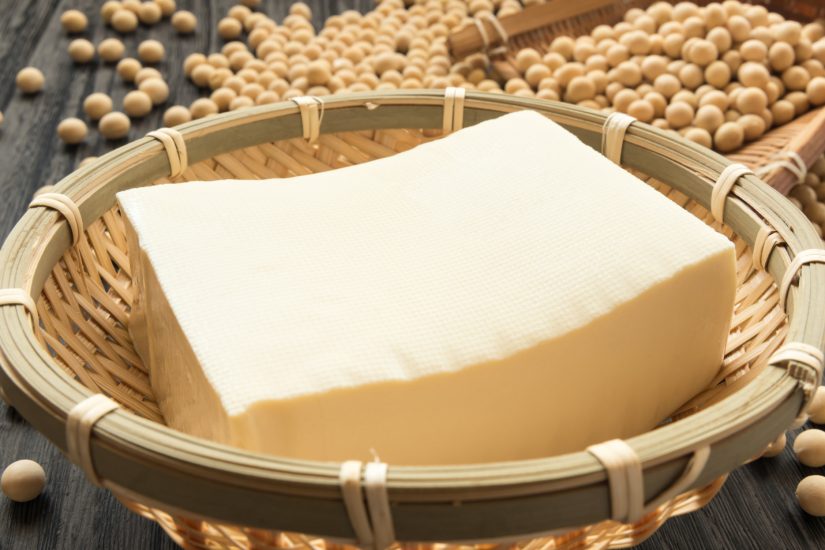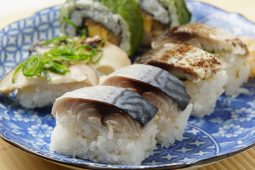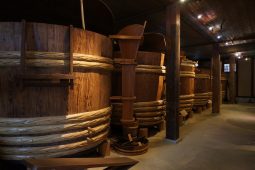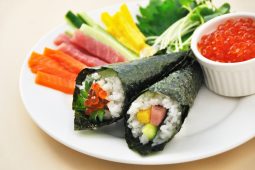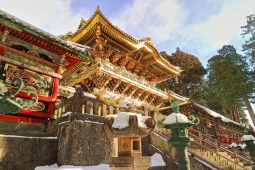There can’t be many people who haven’t heard of TOFU, but I suspect that many of us from outside of Asia haven’t looked into what tofu is made of, and all the myriad ways in which it can be served.
One of the best ways to do so and experience its fresh and smooth simplicity is in restaurants which often come under the name of TOFU-UKAI. They are usually set in the surroundings of a Japanese garden mimicking nature, with miniature rivers and watermills.
In Autumn last year, I went to one such restaurant in Hachioji where I chose from their very reasonably priced Autumnal Menu. Before I get into that, however, let’s look at the basics of how tofu is made.
After the mashed soya beans are pressed through a cloth, you are left with the soya milk and the dry white pulp from the beans known as “okara”. The soya milk is then heated on a stove and magnesium chloride (or sea water) called “Nigari” is added as a coagulant to thicken it. Nigari is obtained by taking seawater and boiling it down to extract the magnesium chloride.
Much of the tofu-making process is actually very similar to the method of making a basic hard or soft white cheese using just milk and rennet. Compare the above techniques with cheese making, particularly crowdie (a kind of cottage cheese I am familiar with), where the dairy milk would be heated, and rennet added as the coagulant. Like the dairy milk and crowdie or cottage cheese, once the soya milk has thickened sufficiently the tofu can then be pressed and squeezed through a kind of “cheesecloth”.
Tofu-making shops use tools and containers, some of which look similar to cheese-making gear, like wooden “cheese” presses. This shapes the tofu into the familiar square blocks and then they are kept wrapped in a cloth until the excess liquid drains and to prevent them from falling apart. Just as cheese comes in different textures, shapes and sizes, so too does tofu. The most common being a firm (but soft) tofu or a delicate “silken” texture. The firmer type tends to be fried and grilled, whereas the silken type is most often used in soups which don’t require a long cooking time, or in cold salads.
TOFU-UKAI restaurants
The Tofu-Ukai type of restaurant that I mentioned earlier is the perfect place to experience the variable ways to taste and savour tofu through different cooking techniques and use of the tofu skins and pulp left-over from the tofu-making process.
In Hachioji, I sat outside the restaurant on an elegantly clothed bench in the peaceful grounds listening to the running water and taking in Japan’s natural environment in replica. Though located in an urban area, all I could hear was the soft sound of traditional Japanese string-instruments and the murmuring of the spring gurgling through the garden, with the immaculately pruned trees and bushes adding to the effect. It wasn’t long before I was guided into the tatami-style room with a large table next to a window facing part of the garden where a mini watermill wheel turned slowly through the force of the stream current. Seated at my table, I chose a course priced at 5,400 yen that included seven different dishes with which I ordered a cylindrical, bamboo “chanter” of chilled sake.
The sake arrived in time to accompany the first course of grilled tofu in sesame sauce.
Next up were deep-fried pieces of tofu with dipping condiments and fresh bonito flakes. The crunchy texture combined with the mildly sweet and savoury flavours from the condiments excited the palate and was further enhanced by a second glass of chilled sake I had poured to help wash it down.
Round 3 was a delicate triple assortment of autumnal delights. Yes, there was tofu in each one. Yes, they were delicious as well as being a work of art. No, I couldn’t tell you how they were made – but what I can tell you is that I poured myself another glass of sake.
The fourth course was sashimi, but the fifth course was a large clay pot of tofu simmered in its own soya milk. Simple but just so light, warm and soothing.
The sixth and penultimate course was a small meal in itself of steamed salmon and ikura roe rice, miso soup, and pickles. I also had my sixth glass of sake from the “chanter”-like cylinder whose volume must have been measured to fit the number of courses, because that’s exactly when it ran out!
Finally, the dessert was a chestnut YOKAN with a pot of roasted, green tea to cap off a wonderful, light meal.
I left the Tofu-ukai restaurant in Hachioji feeling satisfied, but not heavy. It just seemed to be the right amount, planned and executed by skilled, professional chefs, yet at a budget anyone could afford. Highly recommended.


